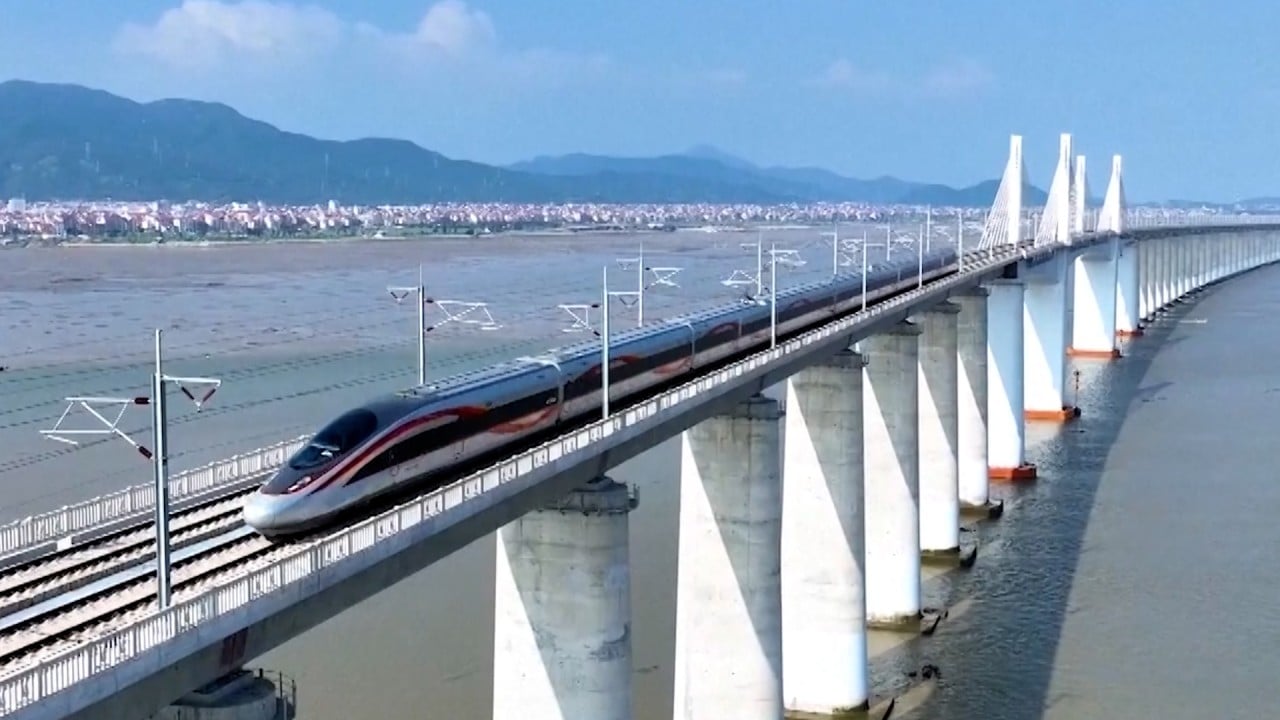
China creates world’s first boring and blasting tunneller to rip through hard rock
- The BBM combines multiple functions that can be adaptively used in extremely challenging geological conditions, CRSIC said
- The machine has passed three trials and is likely to be used in hydropower projects, mining and infrastructure construction
“The development of the boring and blasting machine can solve current challenges in long and large tunnel construction, offering a new solution for such projects,” he said in an interview published on Monday by China’s Science and Technology Daily.
The BBM uses a combination of mechanical, electrical, hydraulic, sensing, mechanics and guidance technologies, allowing for the simultaneous use of traditional drilling and blasting methods, alongside the power of modern tunnel boring machines.
The machine features two cutter heads and leverages the complementary advantages of each method, improving efficiency while also being environmentally friendly.
“It effectively combines the functions of tunnel boring machines (TBMs) and traditional drilling and blasting methods, featuring multiple excavation modes,” Chen said.
According to the Science and Technology Daily report, the BBM has completed trials under three different working conditions. The trial results showed that “under extremely hard rock conditions, the efficiency of the hollow cutter head can be increased by 30 per cent after pre-cracking treatment”.
A limitation of conventional TBMs is their tendency to jam and cause delays when they encounter complex geological conditions such as rock bursts, fault zones, and significant deformations in soft rock.
The BBM, which was jointly developed by CRSIC and Tsinghua University’s National Key Laboratory of Hydroscience and Engineering, can handle a range of complex geological conditions, according to CRSIC’s website.
For example, if the BBM encounters a large fault fracture zone, smaller equipment can pre-treat the area using the BBM’s ring cutter head. In cases of sudden mud or water inflows, the BBM can use its ring cutter head for drainage and muck removal, followed by pre-grouting treatment with the same cutter head, it said.
In his interview with Science and Technology Daily, Chen highlighted three major features of the BBM, starting with the hollow cutter head that provides a passage through adverse geological conditions for pre-treatment, avoiding the need for detours.
The BBM’s dual-mode operation, which integrates the TBM with drilling and blasting methods, allows for simultaneous excavation and blasting – a combination that merges the safety and efficiency of TBM equipment with the flexibility of drilling and blasting, enhancing construction efficiency, he said.
Finally, when the surrounding rock conditions are favourable, the central rock block can be used to produce aggregate on-site, reducing project costs and promoting green construction.
According to Qin Pengxiang from Tsinghua University, the BBM “has extensive application value and broad prospects for promotion”.
“It is expected to be used in large-scale water conservancy and hydropower projects, mining, and the construction of highways and railways, establishing China as a world leader in technology and equipment,” he said.
The company, based in Wuhan, capital of Hubei province in central China, built the large shield tunnelling machine Jiangcheng Pioneer, as well as Lu Wu, China’s first 1,000-tonne single-beam bridge erecting machine.
CRSIC was also behind the 2,000-tonne dual-track gantry crane with the largest lifting capacity in China, and Yuehai, the world’s largest 1,800-tonne box girder erecting machine.


